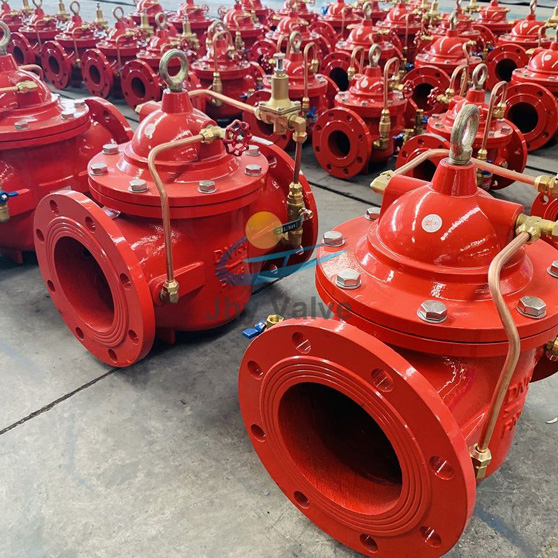Today we share 3 points about fire pressure reducing valves as follows.
(1) The performance of the pressure reducing valve used for fire fighting water supply should be safe and reliable, and should meet the requirements of fire fighting water supply.
(2) Fire pressure reducing valve should be selected according to the design flow and pressure of the fire water supply, and the design flow should be in the effective section of the pressure reducing valve flow pressure characteristic curve, and check at 150% of the design flow, the pressure reducing valve outlet dynamic pressure should not be less than 65% of the design value.
(3) Each water supply partition should have no less than two groups of pressure reducing valves, and each group of pressure reducing valves should be set up as a backup pressure reducing valve;
(4) Fire pressure reducing valves should only be set up on the one-way flow of water supply pipe, and should not be set up on the main water pipeline with two-way flow.
(5) The pressure reducing valve should be proportional pressure reducing valve, when more than 1.2MPa, it is appropriate to use the pilot operated pressure reducing valve.
(6) The pressure reducing valve should not be greater than 3:1 pressure ratio before and after the valve, and when the pressure reduction valve cannot meet the requirements, it can be used in series, but the series pressure reduction should not be greater than two levels, and the second level pressure reducing valve should be pilot operated, and the pressure difference before and after the valve should not exceed 0.40MPa.
(7) The safety valve should be set after the pressure reducing valve, and the opening pressure of the safety valve should meet the system safety, and should not affect the water supply safety of the system.

(1) Pressure reducing valve should be set in front of the entrance of the alarm valve group, when connected to two or more alarm valve group, should set the backup pressure reducing valve.
(2) The pressure reducing valve should be set at the inlet of the filter, the diameter of the filter mesh should not be less than 4 mesh/cm²-5 mesh/cm², and the overflow area should not be less than 4 times the cross-sectional area of the pipe.
(3) The filter and pressure reducing valve should be set before and after the pressure gauge, the diameter of the dial of the pressure gauge should not be less than 100mm, and the maximum range should be 2 times the design pressure.
(4) The control valve should be set before the filter and after the pressure reducing valve.
(5) Pressure reducing valve should be set after the pressure reducing valve to test the drain valve.
(6) The pressure reducing valve should be set up with a flow detection test interface or flow meter.
(7) The pressure reducing valve installed vertically, the direction of water flow should be downward.
(8) Proportional pressure reducing valve should be installed vertically, adjustable pressure reducing valve should be installed horizontally.
(9) The pipe section connected to the pressure reducing valve should not have air plug, air resistance.
(1) The type, specification, design pressure and design flow of the pressure reducing valve should meet the design requirements.
(2) There should be a filter before the pressure reducing valve, and the filtering area and aperture of the filter should meet the design requirements.
(3) The pre-valve and post-valve static and dynamic pressure of the pressure reducing valve should meet the design requirements.
(4) The pressure reducing valve should have a pressure drainage pipe for testing, and the diameter of the pressure drainage pipe should not be less than 100mm; (5) The pressure reducing valve should not show a significant increase in noise or pipe wheezing at small flow rates, design flow rates and 150% of the design flow rates.
(6) The head loss of pressure reducing valve should be less than the design valve after the static pressure and dynamic pressure difference.
Previous: 14X12ST-TAH Slurry Pump
Next: Poly Ripple Screen
Copyright:@2020-2021
Comments Please sign in or sign up to post.
0
0 of 500 characters used